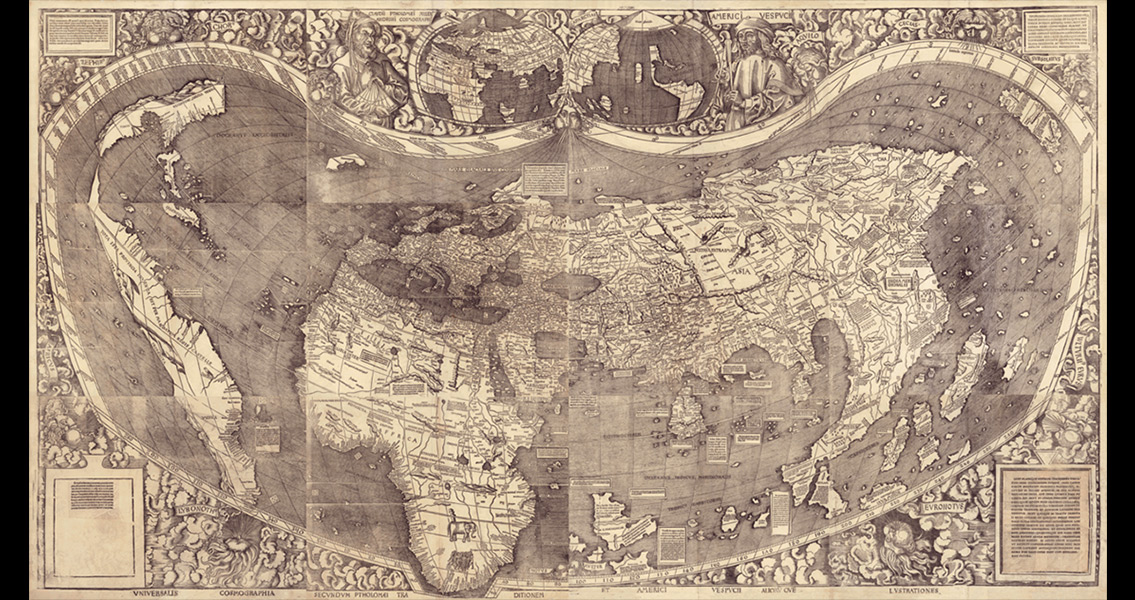<![CDATA[Big Data is used everywhere, from marketing to election campaigns. Now, a new study has applied the remarkable insights it can offer to shed light on the enduring mystery surrounding the history of migration and settlement of the Americas. Key to the study was an analysis of isolates - "languages that have no demonstrable connection to any other language with which it can be classified into a family," according to lead author Mark A. Sicoli, a University of Virginia linguistic anthropologist. North and South America boast an unparalleled number of isolates, 26 in North America and 55 in South America. By comparison, only one isolate exists in Europe, and nine in Asia. After analysing over 100 linguistic features in languages from the Americas, Sicoli and colleagues discovered that the patterns of contact and migration among the early settlers of North and South America were actually far more complex than traditionally thought. "Scientists in the past decade have rethought the settlement of the Americas," Sicoli said in a press release, "replacing the idea that the land which connected Asia and North America during the last ice age was merely a 'bridge' with the hypothesis that during the last ice age humans lived in this refuge known as 'Beringia' for up to 15,000 years and then seeded migrations not only into North America, but also back into Asia." Finding proof of this 15,000 year long habitation of Beringia has of course been difficult due to the fact that most of it has been completely submerged for over ten millennia. Nevertheless, recent archaeological, ecological and genetic data has provided support for the idea that Beringia was inhabited by humans in the last ice age. Sicoli and colleagues' new lingusitic research method used 'big data' to compare similarities and differences between languages. Their results suggest that if Beringia had been inhabited, its population would have been linguistically diverse. Modern Dene and Aleut languages were influenced by at least three now extinct languages from earlier migrations, according to Sicoli's analysis. The Big Data analyses comparing dozens of indigenous languages supports the idea of phases of migration to the Alaskan coast. What's more, it suggests multilingual contact systems were in use. The languages spoken in these systems could well be related to current linguistic isolates. Taken together, the results of the study, published in a paper entitled 'Linguistic Perspectives on Early Population Migrations and Language Contact in the Americas', paint a picture of both populations and languages mixing as the earliest settlers to North America adapted to the harsh environment. "The computational methods give us traction on questions that have been unanswered," said Sicoli. "They help us understand how people migrated and languages diversified not simply through isolation, but through multilingual contact." Working alongside Anna Berge of the University of Alaska and Gary Holton of the University of Hawaii, Sicoli is continuing to glean new insights into the complex story of migration and the spread of languages through the Americas. "In new work, Holton and I also are considering typological linguistic evidence for the subgrouping of the Dene languages suggestive of multiple routes and phases for Dene migrations in North America," Sicoli said. "We find additional support for coastal and interior distributions with two interior migration chains from Alaska into Canada and a later phase of migration involving connections between Tsuut'ina Athabaskan in western Canada and the Apache and Navajo languages of the U.S. Southwest. We also find support for a series of migrations from the Alaska and Canadian interior to the Alaska coast, which raises the question of language contact with prior languages that we are exploring with Aleut specialist Anna Berge." "Based on linguistic analysis including computational phylogenetics," Sicoli writes in the study, "we suggest the prehistory of South Alaska, the Aleutian Islands, and the Pacific Northwest Coast involved intensive language contacts, including language shifts from now extinct languages that we can infer through typological features, grammar and vocabulary found in languages documented in historic periods." ]]>
Migration To Americas Came in Waves, According to Big Data
